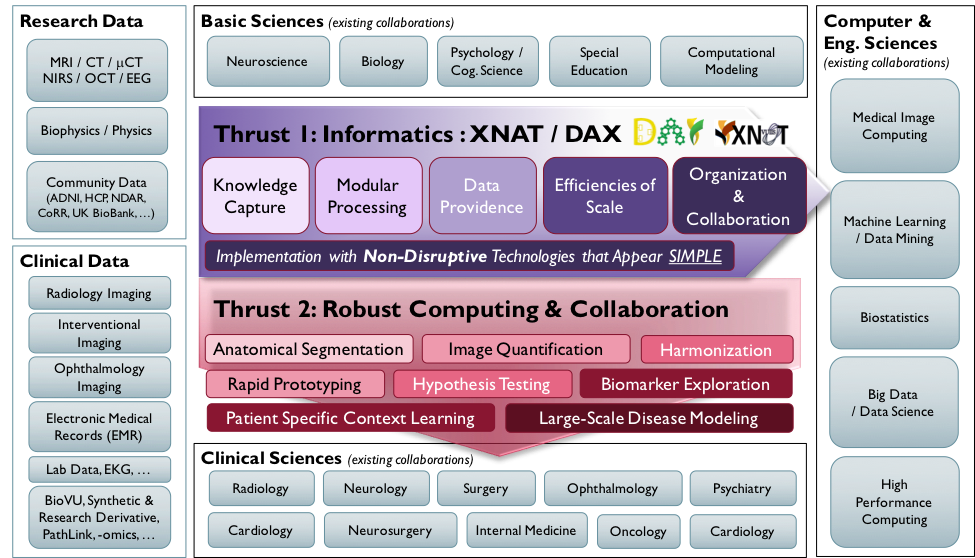Research
The MASI Lab and its institutional collaborators perform translational research to explore innovative, clinically useful techniques. Our primary technical innovations are in medical image processing informatics and algorithms so that domain experts can efficiently develop, evaluate, and deploy methods for diverse anatomical and clinical scenarios using big imaging data. Our methodological research focuses on robust image content analysis, modern statistical methods, and imaging informatics to create, investigate, and apply big imaging data to improve patient care. The primary hypothesis underlying this research is that accurate modeling of the data creation processes leads to efficient characterization of image-based structures, and, in turn, improves the information available for guiding medical science and interventional planning. In the past 6 years, we have transformed the scale of medical image processing possible at Vanderbilt and contributed to over $30M in new external funding. More importantly, we have dramatically reduced the barriers to using medical image processing in clinical and basic science studies. Scores of researchers use our systems on a daily basis. With a small core team of engineers, students, and research assistants, we rapidly investigate new, interesting hypotheses, ranging from brain connectomics and optic nerve disease to abdominal fat and renal drainage.
